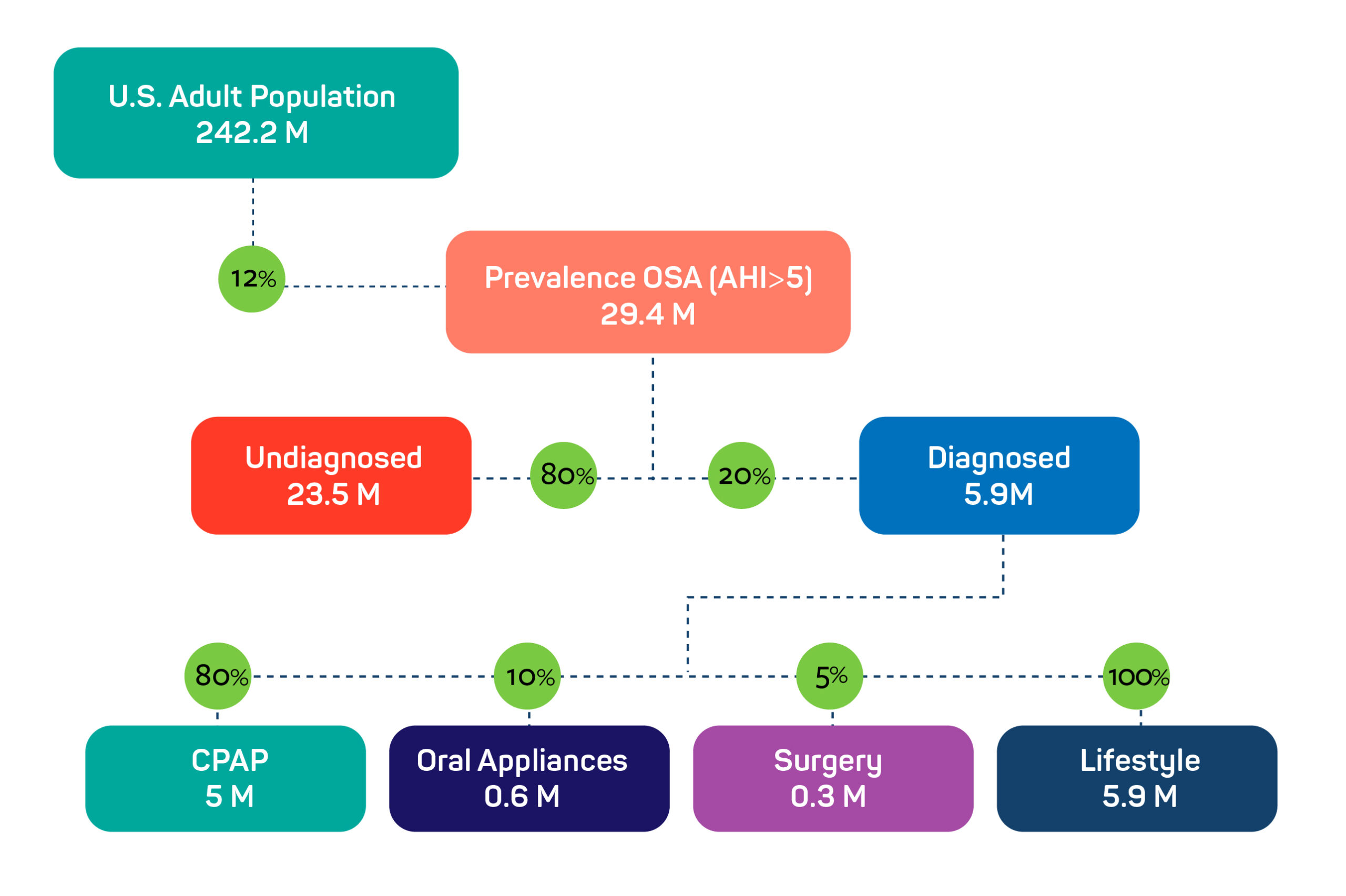Obstructive Sleep Apnea (OSA) National Indicator Report
The Obstructive Sleep Apnea (OSA) National Indicator Report was created as part of the Count on Sleep campaign to provide the public, healthcare professionals, and the public health community with an in-depth review of obstructive sleep apnea and its impact on public health.
OSA National Indicator Report Executive Summary
Executive Summary
Imagine a disease that, if undetected, can lead to heart disease, diabetes, accidents while driving or mistakes in the workplace. That’s the case for obstructive sleep apnea (OSA), a serious, but treatable, condition that causes repeated breathing pauses during sleep, which lead to drops in blood oxygen levels and arousal from sleep. In severe cases of OSA, a person may stop breathing several hundred times a night. OSA affects nearly 30 million Americans, and 80% of cases are undiagnosed. Developed with the support of a grant from the Centers for Disease Control and Prevention (CDC), this report is intended to raise awareness of OSA as a chronic disease with serious health consequences and substantial costs.
Approximately 23.5 million cases of undiagnosed OSA in the U.S. incur $149.6 billion annually, due to increased health care utilization, motor vehicle and workplace accidents, and reduced productivity. Additionally, OSA disproportionately affects some communities, including Blacks, Latinos and Native Americans; such populations are a focus of the awareness program’s efforts to improve screening, diagnosis, and treatment.
There are many barriers to OSA diagnosis and treatment, including insufficient awareness among the public and health care professionals. With this initiative, the American Academy of Sleep Medicine and its partners in the Count on Sleep project aim to spur more conversations between healthcare workers and patients about sleep health. Along with routine assessments of weight and blood pressure, health workers should ask patients about common symptoms of OSA.
With partnership between patients, health workers, public health officials, regulators, and other stakeholders, we hope to raise national awareness of OSA and promote prompt diagnosis and treatment so that patients may reap the many benefits of treatment. These include improved daytime alertness, cardiovascular health, performance at home and at work, and quality of life.
Prevalence, diagnosis, and treatment of OSA in the United States

